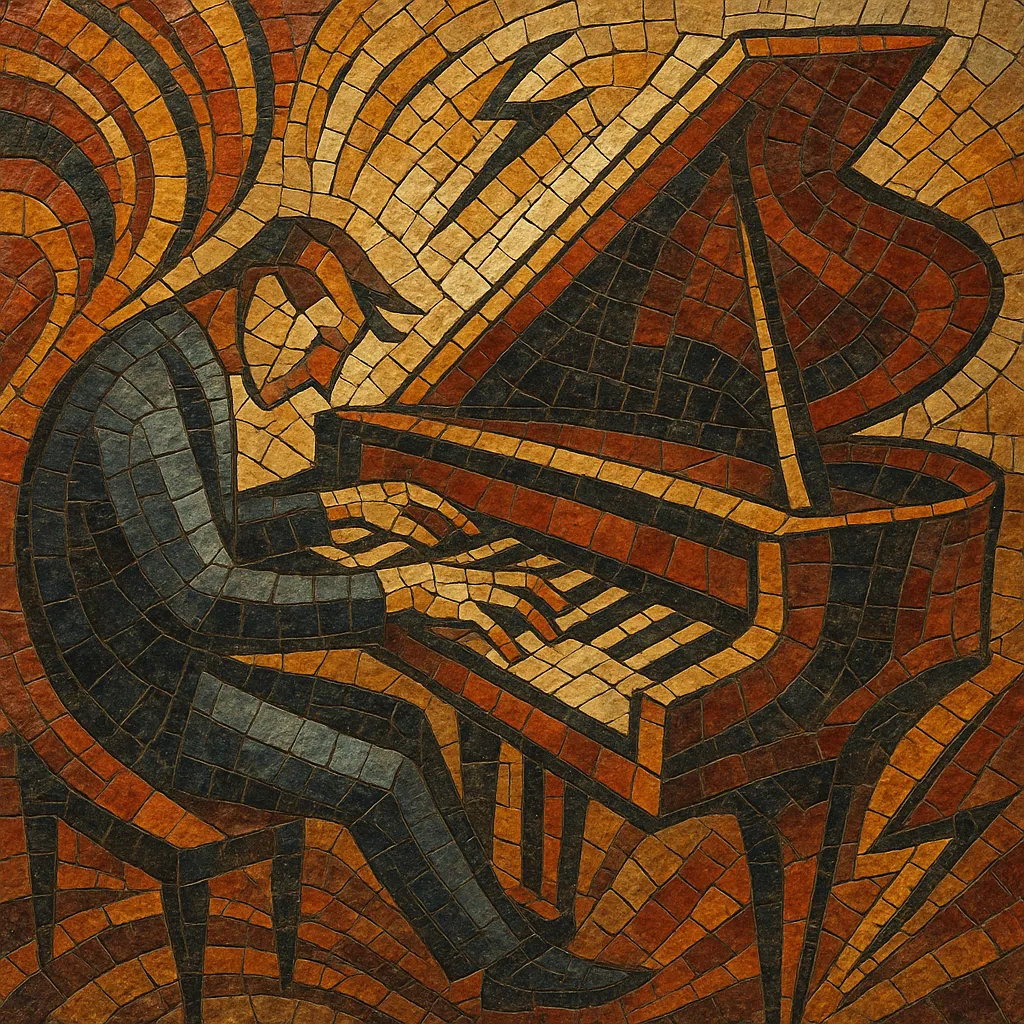A toccata is a virtuosic, often improvisatory keyboard form whose name comes from the Italian toccare, “to touch,” highlighting the performer’s dexterity and articulation.
Typical toccatas feature rapid figurations, bold chordal gestures, dramatic pauses, and sudden textural and harmonic contrasts. While born on the organ and harpsichord in late Renaissance Italy, the form flourished in the Baroque—frequently paired with a fugue—and later inspired Romantic and 20th‑century composers to write perpetual‑motion showpieces for piano and other instruments.
At its core, the toccata is about kinetic energy and rhetorical freedom: a display of touch, speed, and sonic grandeur that evokes the feel of spontaneous improvisation even when meticulously composed.
The toccata emerged in late 16th‑century Italy, especially within the Venetian keyboard school. Composers such as Claudio Merulo cultivated a free, idiomatic style for organ and harpsichord that mimicked live improvisation: cascading scales, broken chords, and abrupt harmonic turns. The genre’s name (“to touch”) reflects its emphasis on manual agility and timbral control.
In the early Baroque, Girolamo Frescobaldi systematized the genre into sectional, rhetorically driven works that alternated free, recitative‑like passages with more imitative or chordal segments. In northern Europe, the North German organ school (often described by Athanasius Kircher’s term stylus phantasticus) carried the toccata to new dramatic heights through Dieterich Buxtehude and others, favoring bold pedal work and large‑scale contrasts. Johann Sebastian Bach’s toccatas—most famously the Toccata and Fugue in D minor (BWV 565) and the seven keyboard toccatas (BWV 910–916)—cemented the form’s prestige and its pairing with fugue.
In the 19th century, Robert Schumann reframed the toccata as a pianistic tour de force (Toccata in C major, Op. 7), setting a template for perpetual‑motion brilliance. Early 20th‑century composers (Claude Debussy, Maurice Ravel, Sergei Prokofiev, Aram Khachaturian) revived the title to channel neoclassical clarity and modern motoric drive, often emphasizing relentless rhythm, crisp articulation, and high‑velocity textures.
The toccata’s idiom—free yet tightly profiled, virtuosic yet architectural—has influenced keyboard prelude traditions, concert showpieces, and neoclassical thinking. Its dramatic, motoric rhetoric echoes well beyond the organ loft and recital hall, informing later concert music and even crossings into progressive rock via arrangements and stylistic borrowings.


